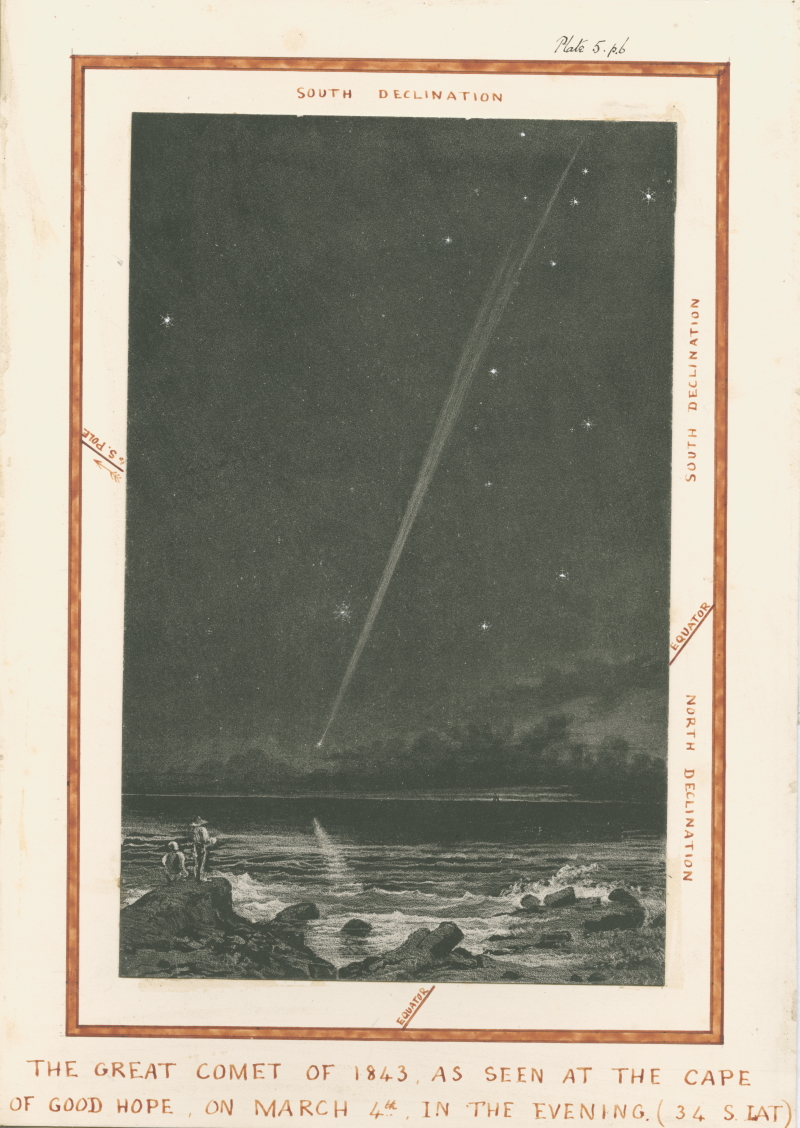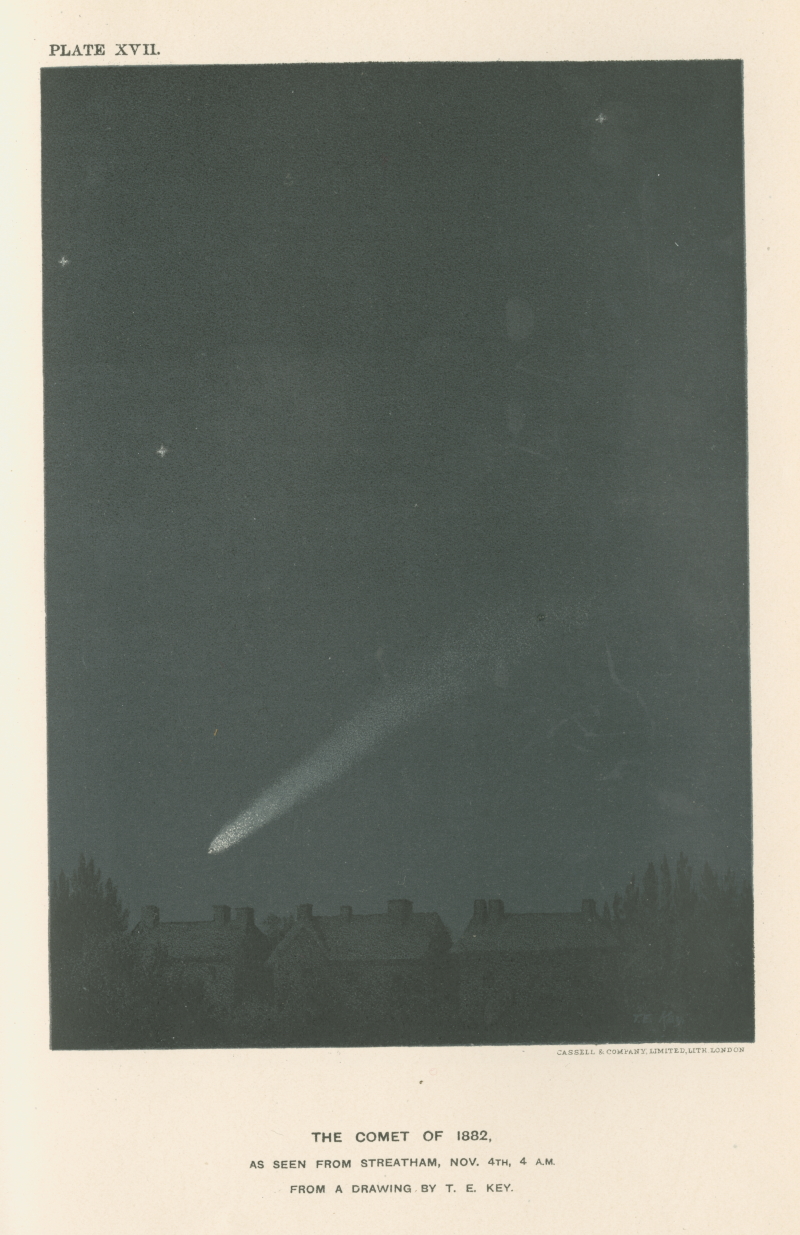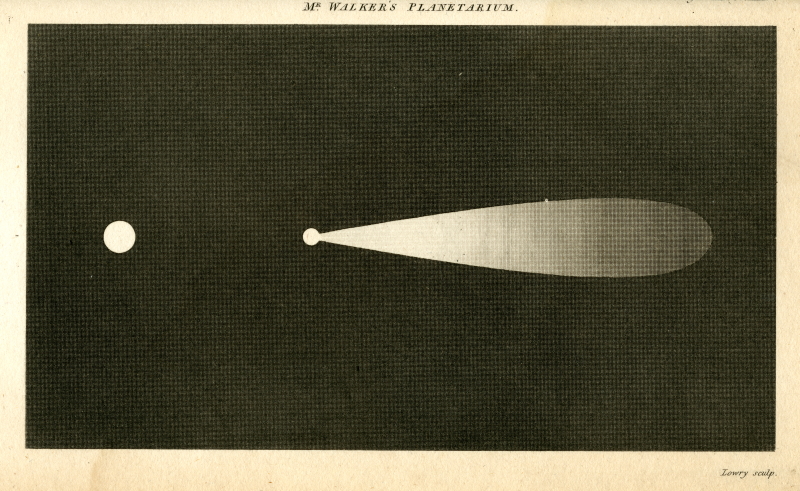Keith Moore looks to the skies for comets past and present.

There has been considerable press coverage of the ‘green comet’ C/2022 E3 (ZTF) over the past month, with plenty of background information (‘not seen since the Stone Age!’) and instructions on where to look for it. NASA’s webpage at least has a health warning that these celestial bodies’ brightnesses are ‘notoriously unpredictable’ and I can vouch for that. Most of my attempts to see comets have been pretty disappointing, so although I’ll try again, I’m not holding my breath for this one.
According to fiction-writers, holding your breath might be a good idea, however. From Edgar Allan Poe’s short story, The conversation of Eiros and Charmion (1839) to H.G. Wells’s In the days of the comet (1906) and perhaps Arthur Conan Doyle’s The poison belt (1913), authors have been taken with the not-so-pleasant idea of humanity being gassed from space by passing visitors. Nonsense of course (although Wells’s comet did have ‘an unknown line in the green’…) but evidence that the real thing made a big impression on the minds of the nineteenth century. If you wanted to see a really bright comet, that was the time to be alive.
There seem to be so many luminous Georgian and Victorian comets that it is difficult to enumerate them all. The lack of light pollution must have helped observers of course, but if the illustrations in contemporary magazines are anything to be go by, some of these events proved to be extraordinary in size and brilliance, and quite visible in daylight.
 The Great Comet of 1843, by Charles Piazzi Smyth (RS.10050)
The Great Comet of 1843, by Charles Piazzi Smyth (RS.10050)
The Great Comet of March 1843 was best seen from the southern hemisphere. The astronomer Charles Piazzi Smyth was fortunate enough to be in South Africa, assisting Thomas Maclear at the Cape Observatory, and he painted the impressively long-tailed comet in oils and in watercolours. Back in England, John Herschel recorded a ‘remarkable streak of light under Orion’ in his diary on 17 March, deciding two days later that ‘It is surely the tail of a comet…’ In Perugia, Italy, the mathematician Mary Somerville gave some idea of its scale: ‘a most curious cloud which never altered its position; it was a very long narrow stripe reaching from the horizon, till nearly overhead - it was the tail of the magnificent comet…’.
 The Great Comet of 1861, by Angelo Secchi (Tracts 419/6)
The Great Comet of 1861, by Angelo Secchi (Tracts 419/6)
When I read Herschel’s diary comment of surprise at what he saw, I was a little taken aback, but of course I shouldn’t have been – we are so used to having advance warning of such events from the 10 o’clock news, that it is difficult to think back to the slower passage of information in the early nineteenth century. Fortunately, if you missed that comet, there were plenty of others. The 1843 event was preceded by a return of Halley’s comet in 1838, which Piazzi Smyth also managed to see. Those two were succeeded in the night sky by Donati’s comet in 1858, famous for its spectacularly curved shape, and for inspiring the (thankfully non-apocalyptic) poem by Thomas Hardy, The comet at Yell’ham.
 The Comet of 1882, as seen from Streatham, South London, after T.E. Kay (RS.9183)
The Comet of 1882, as seen from Streatham, South London, after T.E. Kay (RS.9183)
Later in the century, Melbourne and Cape Town Observatories were again reporting what would become known as Kreutz Sungrazer comet types (as was the 1843 body), this time the Great Southern Comet of 1880 and the Great Comet of September 1882. The latter could be seen in daylight, very close to the Sun, and there were even reports of it being visible through light cloud; not at all like the fuzzy specks that I’m used to.
 ‘Cometarium’ from the Philosophical Magazine, 1806
‘Cometarium’ from the Philosophical Magazine, 1806
Hopefully, our February comet will be worth seeing. Alternatively, and for those who want to attempt it indoors, Tilloch’s Philosophical Magazine for 1806 contains a Description of a Cometarium invented by Ezekiel Walker. With a lens, a candle, and a pin, you could create your very own (admittedly unspectacular) comet projection effect. But I'll be setting my alarm for 4:00am, just on the off-chance that the skies will be clear, the streetlights will be dim, and my anti-comet gasmask won’t steam up in the cold.







